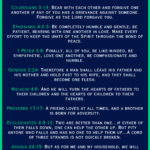Have you been introduced to the delightful world of “Bluey”? If not, especially if you’re a parent, you’re in for a treat. This Australian animated series, designed for preschoolers with episodes lasting around five minutes, has captured the hearts of families worldwide. At its core is the Heeler family, and understanding the “Bluey Family Tree” is key to appreciating the show’s charm and relatability.
“Bluey” centers around Bluey, a Blue Heeler puppy, and her family. Now, I’ll admit, dogs and cartoons aren’t typically my favorites. Yet, there’s something undeniably captivating about this show, about these animated dogs. The episodes are brief, impactful, and genuinely heartwarming. I find myself recommending “Bluey” to fellow parents at every opportunity, even when they haven’t asked!
My husband enjoys “Bluey,” but he doesn’t quite share my level of enthusiasm. He often jokes about Bandit, Bluey’s father, saying, “I can’t be that patient! I can’t play as much as he does! It sets unrealistic expectations for what it means to be a good parent!”
He has a point. Bandit and Chilli, Bluey’s parents, are remarkably patient and playful. However, instead of feeling inadequate, “Bluey” resonates with me on a deeper level. It perfectly captures what I strive for in my own parenting journey: finding the extraordinary in the everyday moments.
For years, I facilitated interfaith dialogues with young adults. One question I loved to pose was, “What do you love most about being _____?” The responses were always insightful and personal. For me, the answer has always been rooted in the concept of the Incarnation. I believe in the divine presence of God entering the world in the simplest form – a baby. Working as a hospital chaplain, especially visiting newborns in the neonatal intensive care unit, reinforces this profound, almost unbelievable miracle. God became human, making the sacred inherently present within our world.
One “Bluey” episode, aptly titled “The Dump,” beautifully illustrates this idea. Bandit takes Bluey and her sister, Bingo, to the local dump. During the car ride, Bluey’s innocent curiosity leads her to ask her father about her existence before birth. Bandit, playfully claiming to know everything, humorously evades the question. They continue their drive, engaging in playful car games and silly questions.
The pivotal moment arrives when Bluey notices Bandit about to discard her old drawings into a dumpster. Distressed, she exclaims, “Hey stop! That’s my drawing! Those are all my drawings!” Bandit, sensing her feelings, reassures her and retrieves the drawings. He explains that he wasn’t throwing them away as trash but placing them in the recycling bin. He elaborates on the recycling process, where the drawings would be broken down and transformed into new paper, ready for another child’s artistic creations. And the cycle continues, with each recycled drawing offering a fresh canvas for a new story. After a thoughtful pause, Bluey declares, “You can throw it away, dad. I can do another one.”
My children are drawn to “Bluey” for its lighthearted humor and playful scenarios. As a parent, I find myself moved to tears, often holding my daughter’s small hand, contemplating how I’ll answer her inevitable questions about life’s big mysteries. I ponder if my children’s scribbled artwork – monsters, stick figures, and all – are, in their own way, sacred texts. These creations, from handprint animals to clumsy letters and zoo animal drawings, are precious. They are treasures to cherish, yet also symbols of life’s cyclical nature, ready to be recycled and reimagined by another young explorer.
This gentle, reflective quality is what “Bluey” consistently delivers in its short, impactful episodes. In another episode, “Rug Island,” Bluey and Bingo present Bandit with a small gift after an afternoon of imaginative play. The gift is a simple marker, just like the ones they used as props during their game. When Chilli sees Bandit with his gift, she asks, “What did she give you?”
“Everything,” Bandit replies with a warm, tender smile.
In our current world, navigating daily life feels increasingly complex. We face ongoing global challenges alongside the everyday demands of parenting – school runs, lunches, illnesses, and work. Layered on top are larger societal issues, from global crises to social injustices.
Yet, even amidst this complexity, we can discover those “sacred drawings,” those “holy markers.” If we can recognize the Incarnation, the divine presence in our messy homes and our imperfect world, we find something truly meaningful. Whether we hold onto this sacredness, share it, or let it transform, it is always present. There is enough for everyone; the sacred is accessible to all.
On that drive home from the dump, Bluey asks her father a poignant question, “Dad, you know my drawing? Was that someone else’s drawing before it was mine?”
“Well, what do you think?” Bandit responds, turning the question back to her.
“Yeah, I think so,” she answers, thoughtfully.
I think so too. And in the simple, loving dynamics of the Bluey family tree, we find a reflection of this beautiful, interconnected truth.


